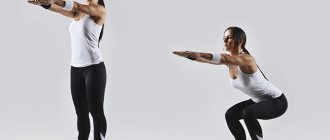General rules for working with a computer
Electronic devices have become such an integral part of human life that it is no longer possible to imagine how people used to cope without them.
With the development of technology in this area, people spend more and more time in front of the monitor, doing work and brightening up their leisure time. Naturally, such a lifestyle cannot but affect eye health. Let's figure out what measures need to be taken to reduce the load on the visual system, how to create optimal working conditions, avoid the occurrence of eye pathologies caused by long periods of time spent at the computer, and consider a series of simple exercises designed to relieve eye fatigue. Whole methods of proper work have been compiled that help to significantly reduce the load on the body. They contain a set of instructions for arranging the work area, requirements for furniture, peripheral devices, premises, and also give recommendations on how the body is positioned during work. The key points are as follows:
- the room should be well lit, equipped with a ventilation system, or, even better, air conditioning;
- the chair must be equipped with a backrest;
- the working area of the table is at least 50 cm deep;
- input devices (keyboard and mouse) are ergonomically designed;
- It is highly desirable to have a modern video card and monitor.
Why does using a computer make your eyes tired and sore?
Unpleasant sensations in the visual apparatus are caused by overwork of the eye muscles. There are several reasons for this:
- physiological characteristics. Human vision is adapted to perceive a three-dimensional image, it contains depth, and the monitor image is two-dimensional, prolonged viewing of which leads to a shift of the focus point beyond the plane of the screen. In an attempt to maintain the usual clarity, the body unconsciously makes great efforts, straining the eye muscle;
- the location of the device relative to the viewer. The eye is designed in such a way that a comfortable field of vision is considered to be vision of objects in front, with a slight downward slope. If the top edge of the monitor is above eye level, then the image “falls out” of the natural range and forces you to actively use the eye muscles;
- glare. Once in the work area, they reduce the contrast of the picture, forcing the visual apparatus to function under heavy loads;
- screen refresh rate. Older monitor models used low image change speeds, about 50-60Hz, which greatly affected eye fatigue. Modern devices do not have this drawback, but discomfort is still felt at the level of peripheral vision;
- Constantly moving your gaze from the sheet of paper to the screen. Increases the load on the extraocular muscles, tiring them.
| Statistical observations have proven the fact that when people look at the monitor they blink less often, the mucous membrane does not receive the required amount of moisture and dries out, creating the feeling of a speck of debris. |
Proper organization of a computer workplace
To avoid future vision problems, you need to properly arrange the space where the computer is installed. A few simple recommendations on how to do this:
- The lighting of the monitor and table should be sufficient and uniform; it is advisable to use incandescent lamps with warm emission spectra;
- the screen must be kept clean, not allowing dust and other dirt deposits to accumulate on it;
- set the maximum allowed image refresh rate;
- position the monitor so that its upper plane is slightly below eye level;
- avoid “sunbeams” in the visibility zone, use a screen with anti-glare coating;
- the distance from the viewer should be at least 50-70 cm.
Rules for working at the computer
Following these simple recommendations, which, unfortunately, are ignored by most, will allow you to maintain your vision at the same level:
- do not spend time watching the monitor in pitch darkness;
- blink more often, give the visual apparatus the opportunity to moisturize and rest;
- maintain uniform lighting of the work area;
- take a 10-15 minute rest every hour;
- During rest, do not neglect to do several exercises for the entire muscle group: raising and lowering your arms, bending to the sides and forward, jumping, squats.
Short exercises should be given special importance; work on a computer is sedentary, does not imply increased physical activity, and as a result leads to serious disorders in the body.
Eye exercises when working on a computer
Physiotherapists have created a large number of complexes designed to relieve tension and fatigue of the visual apparatus. They will be discussed in detail below. Now let’s look at general recommendations that improve blood supply to the eye and strengthen the extraocular muscles:
- to relieve stress and hydrate – blink frequently for a couple of minutes;
- open and close your eyes every 3-5 seconds. to action;
- press lightly on the eyelids;
- move your gaze from distant objects to nearby objects, focusing your gaze for five seconds.
Gymnastics for the eyes when working at a computer is an effective way to prevent visual impairment. Let's look at well-known techniques.
Palming
This exercise was invented by ophthalmologist William Bates. The essence of the training is to relax the eye by doing the following:
- by rubbing your hands together, warm them up;
- Close your eye sockets with your palms, fingers should cross in the forehead area;
- feel the darkness;
- After removing the brushes, feel the temperature difference without looking;
- Close your eyes tightly and slowly open your eyelids.
A simple exercise will restore the brightness of color perception and clarity of vision.
Through my fingers
This training allows you to quickly and effectively relax your visual apparatus and relieve unnecessary tension. It is recommended to do it several times during the day, in moments of rest. The order of execution is as follows:
- place your hands in front of your face, fingers slightly open like a fan;
- make 10-15 turns of your head, without fixing your gaze on anything, but as if looking through an obstacle;
- try not to strain and keep your breathing even.
Writing with your nose
This exercise is universal because, in addition to the eyes, it also relieves fatigue from the neck muscles. After all, tension in it disrupts blood circulation and nutrition of the organs of vision. Follow these steps:
- relax, and with your eyelids closed, imagine that the tip of your nose is a pencil;
- try writing them a letter, a whole word, or drawing a simple picture.
Moving your eyes to the sides
Visual gymnastics is very simple in technique; you need to move your gaze in a horizontal plane, and then from top to bottom. The only thing worth noting is that you need to do it with pleasure, without allowing the muscles of the visual apparatus to strain. Do the workout 15-20 times. To avoid getting dizzy, pause after five repetitions.
Exercise "Big Circle"
The head, when performing this activity, should be motionless. Make orbital movements with your eyes. To simplify, imagine a ball, or say, a watch dial. Lead your gaze along its circumference, first in one direction, then in the opposite direction. Rest for a few seconds, repeat, but this time complicate the execution, stop and fix your gaze on each digit of the clock. When finished, blink slowly.
Endless Eight
As in the previous exercise, the head is motionless, and with your visual apparatus you mentally first draw the largest possible infinity sign, and then the same number of the same name as large as possible, the only rule is, try to do it in such a way as not to experience painful sensations. Repeat each symbol 10-15 times.
Look at the nose
Before performing, you need to relax your eyes, closing them for ten seconds, and then blink them slowly. Then try to see the edge of the nose. The gaze must be fixed for no more than 2 seconds, otherwise you will get the opposite result and strain the extraocular muscles.
Near and far
It is considered the most effective; to perform it, you need to focus your gaze on an object located next to you, and concentrate all your attention on it, and then turn your gaze to a distant object. Repeat the cycle 20 times.
Square
When performing the training, it is enough to keep your head still and draw an imaginary equilateral rectangle with your eyes, trying to outline it as accurately as possible.
Neck massage and exercises
To ensure good blood supply to the brain and eyes in particular, it is necessary to pay attention to the condition of the neck muscles. It is advisable to do a warm-up after taking a bath or shower, or directly during the procedures. Water is a natural sedative and perfectly relaxes.
Self-massage is performed either with your hands or with the help of mechanical or electrical devices, which are considered more effective. Before starting, apply a small amount of cream or oil to the skin, and then, starting with light stroking movements, gradually adding pressure, up to tapping with the edge of the palm, knead the muscles until they are completely warmed up. They combine manipulations with head tilts and circular rotations.
Eye massage
- It is carried out to relieve tension in the visual apparatus, in conjunction with the gymnastic exercises described earlier. The execution method is as follows:
- placing the fingertips on the corners of the eye closest to the bridge of the nose, without lifting them, perform subtle circular movements, first in one direction, and then in the opposite direction;
- repeat the same steps, but with the outer part;
- lightly tap the upper and lower eyelids, and then move on to small pressures.
Eye Gymnastics by William Bates
We became familiar with the methodology for performing this exercise while considering palming. Now let's look at its therapeutic effect. The fact is that the essence of the procedure is immersion in darkness, which needs to be felt, and it, in turn, promotes the production of rhodopsin, a substance important for vision, in the retina. It also provides maximum relaxation of the eye and is considered one of the most effective.
Computer programs for the eyes
The problem of the influence of monitors and other electronic devices on vision motivated software developers to release applications designed to relieve fatigue from the visual system and speed up its recovery.
On the Internet it is not difficult to find a large number of free programs that help maintain a healthy gaze. An illustrative example is one interesting application, Eyes Relax, which displays eye workouts on the monitor screen at user-specified intervals, forcing you to take breaks from work.
| Noteworthy programs include: EyeLoveU, C&V, NI Glaz, NEWBaRest, EyeLeo, Orbis, Workrave. |
The simplest and fastest exercises
It is advisable to print or save the above picture and keep it at hand as a reminder with an elementary simple set of eyeball movements that helps relieve fatigue; believe me, over time you will learn it by heart.
Video exercises
In addition to graphic and schematic images illustrating eye gymnastics, a large amount of material has recently appeared that fully reveals the problem. You just need to type the topic you are interested in in the search bar. As a visual example, we suggest that you familiarize yourself with one of the many video exercises.
Loose Neck: 9 Best Exercises for the Cervical Spine
These exercises for the cervical spine not only strengthen muscles and shape posture, but also help relieve tension headaches that occur in most people with mental work.
After performing the proposed exercises, muscle spasms disappear and blood supply to the brain is normalized. Include these exercises in your office gymnastics routine, do it several times a day, use it during long journeys on the ground and in the sky, as well as in other situations when you have to remain motionless for a long time.
Exercise "Collar"
Starting position – sitting or standing.
Both palms clasp the upper part of the neck so that the thumbs are in front and the rest are located on the back of the neck.
This way you create something similar to a collar. Your fingers moderately cover the neck and create a point of rotation for the head. The exercise begins from the upper part of the neck, that is, the greatest impact is on the upper vertebrae.
Keeping your fingers in place (being careful not to put pressure on the trachea and larynx from the front), slowly flex and extend your neck, then slowly tilt your neck and head to the right and left.
Hold in extreme positions for 3-5 seconds.
The total number of repetitions of movements in each direction is from one to three.
Then move your hands to the middle part of the neck and repeat the movements in this position. In this case, the maximum impact will be on the middle cervical vertebrae. Next, place your hands on the lower part of your neck and repeat the exercise in this position. Finally, place both hands on the trapezius muscles on the sides of your neck and repeat the above movements again.
At this moment, the point of rotation of the cervical vertebrae will also move down.
Office version of the exercise
The “Collar” exercise selectively affects the upper, middle and lower cervical vertebrae. While sitting at your desk, do this exercise in the office during a break and you will feel rapid relaxation and relief from neck pain.
Exercise “Hold your jaw”
Starting position - sitting, both hands clasp the lower jaw so that the thumbs are under the chin, and the remaining four fingers of both hands are on the lower teeth. You hold the lower jaw with both hands, slightly pushing it forward. Using your hands, slightly stretching your jaw forward, you simultaneously slowly lift it up, performing a slight extension in the cervical spine.
Hold this position for 1-2 seconds, then lower your jaw down, while flexing your cervical spine.
Also hold the isometric muscle tension in the bottom position for 1-2 seconds. Next, repeat the upward movement.
The total number of repetitions is 10–12.
When performing the Jaw Hold exercise, you move the upper part of the cervical spine. We especially recommend this exercise for spasms of the neck muscles, occipital and cervical-occipital pain.
Free Neck Exercise
Starting position – standing with your back to the table, holding the edge of the table with your hands.
The exercise is performed in three phases.
Isometric muscle tension phase:
you stand with your hands on the table, then slightly bend back, throwing your head back a little.
Try to tighten the back muscles of your neck and back muscles.
Muscle stretching phase: while continuing to hold onto the table, squat down.
8shg
Dynamic phase: in a squatting position, calmly bend your head forward.
Try to stay in the extreme position for 1-3 seconds, then straighten your head and try to maintain the achieved position for 1-3 seconds.
A similar exercise is “Fulcrum”.
However, it actively affects the lower part of the cervical spine and the muscles of the shoulder girdle, which suffer from cervical osteochondrosis, during sedentary work.
Be sure to include it in a set of exercises for the neck, and also use it if you experience pain in the lower part of the neck when working at the computer.
Consistent tension and stretching in this exercise eliminates muscle spasm at the base of the neck and relieves pain.
Exercise "Pendulum"
Starting position – sitting on a chair. Place a book on your head.
Rock your head back and forth.
Try to keep the book on your head during these movements. At the moment when the book begins to slide, swing your head in the opposite direction and then balance the book, holding it on your head. Remember the position in which the book remains in place is the ideal head position for maintaining correct posture.
Try to hold the book on your head for a few minutes. If you can hold a book on your head for five minutes a day, it means your muscles have learned the correct position.
Throw your head back!
This habit is especially relevant for office workers. Periodically slightly tilting your head back, return it to a balance position when the ears are at shoulder level.
This is a position with minimal stress on the cervical intervertebral discs and joints.
Feel the balance of your head and maintain this position all the time while working at the computer!
The exercises below are performed in isometric mode - that is, without movement. Muscle tension is created by creating resistance to movement using hand pressure.
Apply pressure and strain the neck muscles gradually; performing exercises with painful sensations is not allowed! Perform isometric tension for 10–20 seconds. Complete the pressure smoothly, without abruptly removing your hands.
Starting position – sitting straight on a chair. Place your hand on your forehead. Isometric tension phase: try to bend your head, as if saying “yes,” while resisting yourself with your hand, resting it on your forehead. Maintain isometric muscle contraction for 10–20 seconds.
Stretch phase: Tilt your head back slightly. Help with your hand touching your forehead to make this movement. Place your other hand on the back of your neck, creating support.
This way you will stretch the anterior neck muscles that were tense in the first phase of the exercise.
Stretch for 2–5 seconds.
Do not stretch with force or pain.
Exercise "Sky"
Starting position – sitting straight on a chair. Place your hand on the back of your head.
Isometric tension phase: try to throw your head back - as if looking at the sky, while resisting yourself with your hand, resting it on the back of your head. Maintain isometric muscle contraction for 10–20 seconds.
Stretch phase: Bend your neck slightly downwards. Help yourself with your hand. This way you will stretch the back muscles of the neck, which were tense in the first phase of the exercise. Stretch for 2–5 seconds.
Do not stretch with force or pain.
Exercise "Oh-oh"
Starting position – sitting straight on a chair. Place your hand on your temple and ear. Isometric tension phase: try to tilt your head to the side, while providing resistance to yourself with your hand. Maintain isometric muscle contraction for 10–20 seconds.
Stretch phase: tilt your head, helping yourself with the hand that rests on your head. Place your other hand on the opposite side of your neck to provide support. This way you will stretch the lateral neck muscles that were tense in the first phase of the exercise. Stretch for 2–5 seconds.
Do not stretch with force or pain.
Repeat the exercise, tilting your head in the opposite direction.
Exercise "No-no"
Starting position – sitting straight on a chair. The mouth should be closed, teeth clenched. Place your hand on your cheek. Isometric tension phase: try to turn your head to the side, while resisting yourself with your hand. Maintain isometric muscle contraction for 10–20 seconds. Stretch phase: Turn your head slightly to the side and up using your hand on your cheek. The other hand helps from the opposite side of the head. This way you will stretch the neck muscles that were tense in the first phase of the exercise.
Stretch for 2–5 seconds.
Do not stretch with force or pain.
Repeat the exercise, turning your head in the opposite direction.
These exercises for the cervical spine not only strengthen muscles and form posture, but also help relieve tension headaches that occur in most people with mental work. After performing the proposed exercises, muscle spasms disappear and blood supply to the brain is normalized. Include these exercises in your office gymnastics routine, do it several times a day, use it during long journeys on the ground and in the sky, as well as in other situations when you have to remain motionless for a long time.
Author Igor Anatolyevich Borshchenko, from the book “Spine without pain”
Source: econet.ru
Did you like the article?
Share with friends on Facebook: Share on Facebook
Video text
Gymnastics on the computer. ▶










